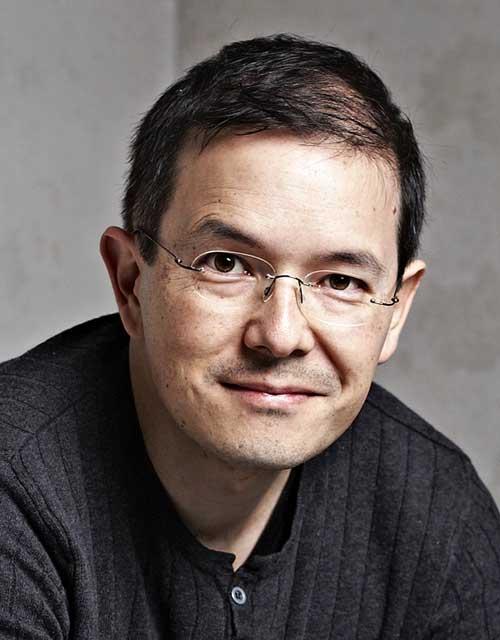
Shaun Tan is a children’s book author and illustrator whose work includes The Arrival, Tales from Outer Suburbia, and The Red Tree, among others. Known for his detailed, fantastical drawings and imaginative worlds, Tan has won awards for his fiction, including a Hugo Award and an Academy Award for the short film adaption of his book, The Lost Thing. The Iowa Review published an excerpt of his recent work, The Singing Bones, a collection of sculptures based on the Brothers Grimm fairy tales, in the Fall 2015 issue. Tan currently resides in Melbourne, Australia, and recently answered some questions via e-mail about his work and process.
TIR: How did you decide which stories you wanted to sculpt for The Singing Bones?
Shaun Tan: The first round was decided for me, as it grew out of a project with a German publisher. But for the other stories that I selected myself, I mainly looked for a certain dreamlike aspect that kept them in my memory. Not necessarily something that was easy to illustrate, but rather something hard to explain in logical terms, or even moral terms. Some of them I did not particularly like as such, but I also had to acknowledge that they had something truthful to say about human nature, no matter how dark. They represented things that felt as though they needed to be represented.
In your introductory note for the excerpt of The Singing Bones that was published in TIR, you wrote that you wanted to visually represent the "bones" of the fairy tales. How did you decide which part of the story was most essential?
I guess I treat every story, like every joke, as quite a small kernel, a kind of mnemonic shorthand that helps you to recall it. Grimm fairy tales may have a lot of these because of a long history of oral transmission. It’s not hard to find the “bone,” whether it’s a house made of candy or a wolf in a grandmother’s bed: the rest of the narrative naturally spools out from these bizarre iconic moments. In some cases, they might be less obvious though. In Snow White, for instance, the story is as not much about Snow White, but rather the Queen, and then less about the Queen than her being struck down with a maddening jealousy: the mirror on the wall, the poisoned apple. It’s always a good exercise for an illustrator to ask, “What is a story really about?” I suppose my whole career as a narrative artist has been based upon asking these questions and looking for the most essential kernels than can then be planted onto a canvas.
What was your process for making the sculptures, and how did you know when you were done with a piece?
What’s that saying—a work of art is never finished, merely abandoned? Well, I’ve noticed over the years that there is a kind of curve to a creative process, where a thing grows, ripens, and then over-ripens (becomes overworked). I’m getting better at spotting the tipping point, stopping myself from continuing, and leaving things just that little bit unfinished. All good stories and images are basically a little bit unfinished; paradoxically, this then becomes the definition of “finished.”

In your introductory note, you say that you respect the endurance of Grimm fairy tales. Do you believe that your work has fairy tale qualities and will be retold in a similar way?
I hope so, but it’s impossible to know, and I’m probably the worst person to ask. I mean, I like to think that the ideas and questions presented by my own stories will still have some currency fifty years from now, and that’s a thought-experiment I routinely apply to my work (especially to check for cultural and technological dating). But who really knows? I would never have predicted that certain Grimm tales would still have such a hold on modern imagination, but they clearly do. Of all my work, I expect that The Arrival will continue to resonate, in part because it draws inspiration from such a broad spectrum of migrant experience, and aspects of history that seem to endlessly repeat, for better or worse.
Finally, how do you want your sculptures to be experienced and remembered by your audience?
I think the most pleasing thing would be if it inspires other people, from artists to small children, to make their own versions of sculptures for these or similar tales, just taking my example as an instructional cue. I had an exhibition of all my pieces in Melbourne, and at the center of the gallery there was a table full of modelling clay, inviting visitors to make their own work, and people of all ages became very addicted to this; it was probably the highlight of the whole show.
Above: Shaun Tan's "The Riddle" from The Singing Bones.
